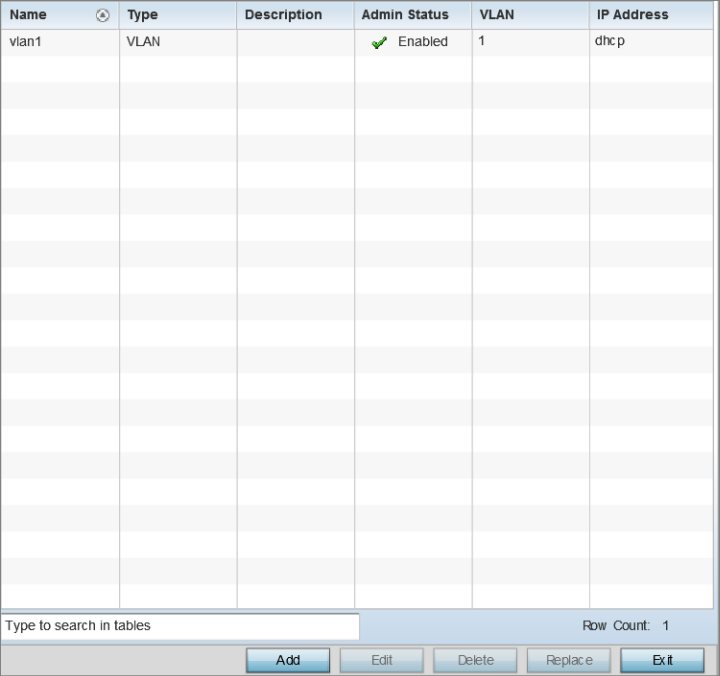A virtual interface is required for layer 3 (IP) access to a controller or service platform or provide to layer 3 service on a VLAN. The virtual interface defines which IP address is associated with each VLAN ID the controller or service platform is connected to. A virtual interface is created for the default VLAN (VLAN 1) to enable remote administration. A virtual interface is also used to map VLANs to IP address ranges. This mapping determines the destination for routing.
To review an access point's existing VLAN configurations
The Device Overrides screen displays. This screen lists devices within the managed network.
The selected access point's configuration menu displays.

|
Name |
The name of each listed virtual interface assigned when it was created. The name is between 1 - 4094, and cannot be modified as part of a virtual interface edit. |
|
Type |
The type of virtual interface for each listed interface. |
|
Description |
The description defined for the virtual interface, either when it was created or when it was edited. |
|
Admin Status |
A green check mark means the listed virtual interface configuration is active and enabled with its supported profile. A red “X” means the virtual interface is currently shut down. The interface status can be modified when a new virtual interface is created or an existing one modified. |
|
VLAN |
The numerical VLAN ID associated with each listed interface. |
|
IP Address |
Whether DHCP was used to obtain the primary IP address used by the virtual interface configuration. |
After reviewing the configurations of existing virtual interfaces, determine whether a new interface needs to be created, an existing virtual interface needs to be edited (overridden), or an existing virtual interface needs to be deleted.